ULTRA-SEVEN: THE COMPLETE SERIES COLLECTION: The Mental Time-Warp Of Japanese Monster T.V.
The beauty of revisiting old entertainment relics is that you can often tap into a part of your imagination that is rarely stimulated in the here and now. There are certain types of entertainment that can take you back to a more innocent and wide-eyed time you enjoyed as a young consumer of entertainment. When you experience one of these pop culture artifacts, it can tap into a mental time-warp that awakens your inner child, allowing to see whatever you are looking and/or listening to with a sense of wonder that your adult mind usually has trouble summoning up.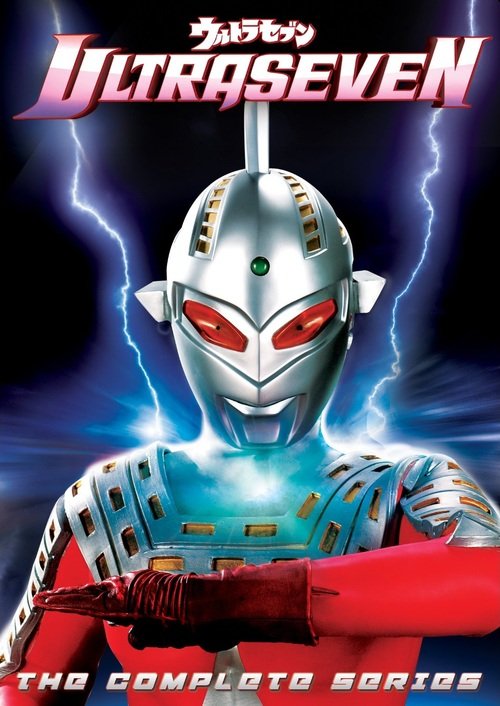 For viewers of a certain age, the Japanese monster movies/television of the 1960's and 1970's are a passport to this sort of time-bending nirvana. Godzilla, Gamera and their ilk cleaned up at the kiddie box office all over the world because they could deliver a mixture of sci-fi and fantasy elements in a lysergic yet innocent way that tapped right into the childhood imagination zeitgeist for that era. If you were a kid back then and had your little mind blown by one of these movies, you know what is being discussed in this review.The same goes for the televised component of this Japanese kid-entertainment way: Ultraman, Space Giants, etc. In fact, the televisions might serve as more potent example of this "kiddie mental mind-warp" principle because their time limitations required that they deliver a concentrated version of this fun in a shorter, more demanding space. Ultra Seven is a lesser known example of the
For viewers of a certain age, the Japanese monster movies/television of the 1960's and 1970's are a passport to this sort of time-bending nirvana. Godzilla, Gamera and their ilk cleaned up at the kiddie box office all over the world because they could deliver a mixture of sci-fi and fantasy elements in a lysergic yet innocent way that tapped right into the childhood imagination zeitgeist for that era. If you were a kid back then and had your little mind blown by one of these movies, you know what is being discussed in this review.The same goes for the televised component of this Japanese kid-entertainment way: Ultraman, Space Giants, etc. In fact, the televisions might serve as more potent example of this "kiddie mental mind-warp" principle because their time limitations required that they deliver a concentrated version of this fun in a shorter, more demanding space. Ultra Seven is a lesser known example of the 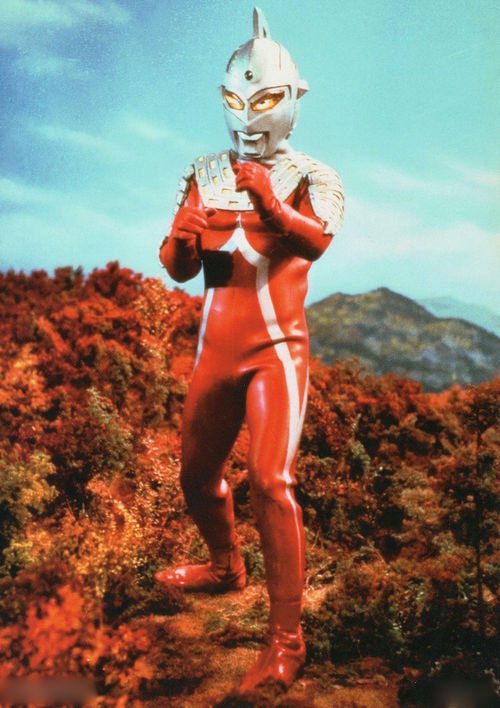 televised form but it's worth rediscovering if you want to ride that time-warp wave because it delivers all the giant monsters, heroic aliens and destroyed miniatures you could ever want.The premise of Ultra Seven is seemingly designed to tap into the pleasure centers of the kiddie monster-mash fan's brain: it propose the existence of an Ultra Garrison that protects the planet from a seemingly endless string of alien races that either want to destroy or conquer the Earth. It's a daunting task but the planet acquires a new champion when an alien appears in a humanoid guise to help the Ultra Garrison. He goes by the name of Dan Moroboshi (Satoshi Furuya) but he's actually from the same area of the galaxy that gave the world Ultraman - which this show is a semi-sequel to. More importantly, he has the ability to transform himself into a size-changing, silver and red warrior known as Ultra Seven.
televised form but it's worth rediscovering if you want to ride that time-warp wave because it delivers all the giant monsters, heroic aliens and destroyed miniatures you could ever want.The premise of Ultra Seven is seemingly designed to tap into the pleasure centers of the kiddie monster-mash fan's brain: it propose the existence of an Ultra Garrison that protects the planet from a seemingly endless string of alien races that either want to destroy or conquer the Earth. It's a daunting task but the planet acquires a new champion when an alien appears in a humanoid guise to help the Ultra Garrison. He goes by the name of Dan Moroboshi (Satoshi Furuya) but he's actually from the same area of the galaxy that gave the world Ultraman - which this show is a semi-sequel to. More importantly, he has the ability to transform himself into a size-changing, silver and red warrior known as Ultra Seven.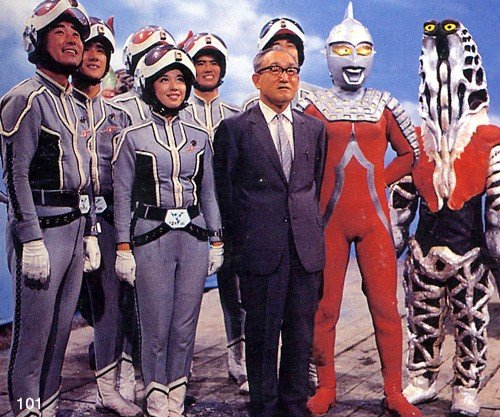 Moroboshi becomes part of the Ultra Garrison in the pilot episode and the show quickly takes on a reliable, winning formula: some sort of diabolical alien force either subtly or overtly enacts its destruction/domination plan on the earth via some location in Japan, the EDF investigates, a battle between earthlings and aliens commences and Ultra Seven makes an appearance near the finale to take the extraterrestrial trash out.This plotting style works because Ultra Seven never skimps on the kaiju eiga-styled special effects. Indeed, every episode is packed to the gills with model effects, process shots, laser-zap opticals and any other effect they could wring out of the budget. The producers knew which side their bread was buttered on so they make each episode a veritable special
Moroboshi becomes part of the Ultra Garrison in the pilot episode and the show quickly takes on a reliable, winning formula: some sort of diabolical alien force either subtly or overtly enacts its destruction/domination plan on the earth via some location in Japan, the EDF investigates, a battle between earthlings and aliens commences and Ultra Seven makes an appearance near the finale to take the extraterrestrial trash out.This plotting style works because Ultra Seven never skimps on the kaiju eiga-styled special effects. Indeed, every episode is packed to the gills with model effects, process shots, laser-zap opticals and any other effect they could wring out of the budget. The producers knew which side their bread was buttered on so they make each episode a veritable special 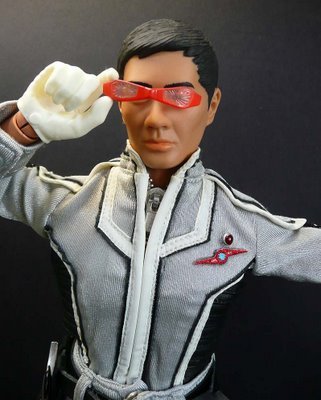 effects orgy. Since the show was of a mid-1960's vintage, there's also a certain psychedelic component to how the monsters are designed: a great example is a scene in one episode where Ultra Seven is struggling through a blizzard and finds himself bedeviled by aliens who appear to him as rod-puppets in shadow form against a backdrop of flames while speaking in squeaky, sped-up voices. With visuals and concepts like these, you don't need mind-altering drugs.To fit in with this emphasis on spectacle, the stories have a breathless, plot-driven comic book tone to them. However, Ultra Seven doesn't hesitate to weave in dramatic subplots about its heroes: one episode features a character having to overcome a phobia during a dangerous mission, anot
effects orgy. Since the show was of a mid-1960's vintage, there's also a certain psychedelic component to how the monsters are designed: a great example is a scene in one episode where Ultra Seven is struggling through a blizzard and finds himself bedeviled by aliens who appear to him as rod-puppets in shadow form against a backdrop of flames while speaking in squeaky, sped-up voices. With visuals and concepts like these, you don't need mind-altering drugs.To fit in with this emphasis on spectacle, the stories have a breathless, plot-driven comic book tone to them. However, Ultra Seven doesn't hesitate to weave in dramatic subplots about its heroes: one episode features a character having to overcome a phobia during a dangerous mission, anot her features a different team member clashing with his mother over his line of work. Added dramatic tension is supplied by the fact that Moroboshi has to keep his dual-identity hidden from the others a la Superman, including an episode where he has to save the person he modeled his human alter-ego while keeping everyone else for discovering he has a doppelganger. These beats are handled with speed to make room for the effects and monster fights but they're prominent enough to give the show an unexpectedly heartfelt tone.More impressively, Ultra Seven doesn't shy away from social and political commentary. The stories also often weave in broad but heartfelt messages about everything from the dangers of the Cold War to the
her features a different team member clashing with his mother over his line of work. Added dramatic tension is supplied by the fact that Moroboshi has to keep his dual-identity hidden from the others a la Superman, including an episode where he has to save the person he modeled his human alter-ego while keeping everyone else for discovering he has a doppelganger. These beats are handled with speed to make room for the effects and monster fights but they're prominent enough to give the show an unexpectedly heartfelt tone.More impressively, Ultra Seven doesn't shy away from social and political commentary. The stories also often weave in broad but heartfelt messages about everything from the dangers of the Cold War to the 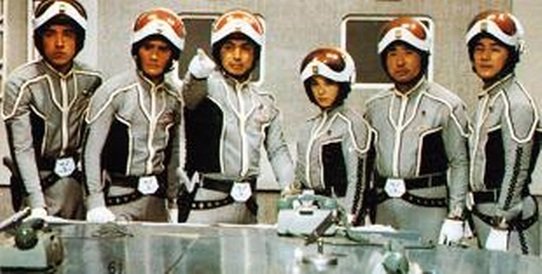 power of forgiveness. Like the characterizations, the messages are done in simple, kid-friendly broad strokes but add an extra bit of spice to what could have been just another kiddie adventure show. These messages are often echoed by a narrator whose voice sometimes pops up at the beginning and end of episodes, though sometimes the translation of the moral can sometimes get twisted: after one episode where an alien poses as a neighbor, the audience is told to be on guard for suspicious neighbors because "you never know what they might be up to" (!).
power of forgiveness. Like the characterizations, the messages are done in simple, kid-friendly broad strokes but add an extra bit of spice to what could have been just another kiddie adventure show. These messages are often echoed by a narrator whose voice sometimes pops up at the beginning and end of episodes, though sometimes the translation of the moral can sometimes get twisted: after one episode where an alien poses as a neighbor, the audience is told to be on guard for suspicious neighbors because "you never know what they might be up to" (!).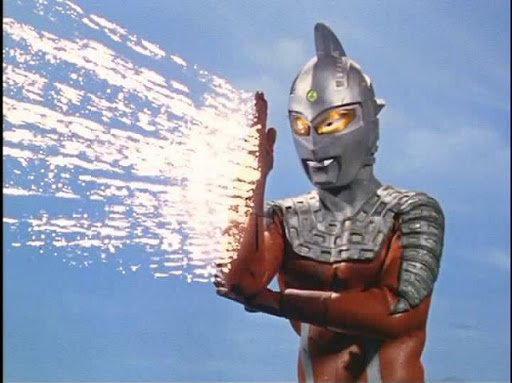 In short, anyone who enjoys Japanese monster/sci-fi fare of this vintage is likely to find Ultra Seven to be more fun than a barrel of Ultramen. The fact that it delivers an entire movie's worth of effects and monster battles in each episode just heightens its levels of fun and value for anyone who enjoys this sort of thing. Put it on and let your lil' Godzilla-loving inner child rejoice.DVD Notes: virtually the entire series run of Ultra Seven has been released in a 6-DVD set by Shout! Factory - the one episode omitted has been buried in the vaults since its original telecast and will likely never be seen again anywhere. The full frame transfers are interlaced and can look a bit soft in places but are pretty watchable overall (in fairness to SF, they were limited to the source materials that the licensor would supply and acknowledge this on the set's packaging). The one audio option is the original Japanese soundtrack and quality English subtitles are provided to go with each episode. The one extra included is a full color booklet with liner notes by Japanese genre fare expert August Ragone. The notes are fantastic, offering plenty of historical info in an easy-to-absorb style and well worth the read for novices or veteran fans.
In short, anyone who enjoys Japanese monster/sci-fi fare of this vintage is likely to find Ultra Seven to be more fun than a barrel of Ultramen. The fact that it delivers an entire movie's worth of effects and monster battles in each episode just heightens its levels of fun and value for anyone who enjoys this sort of thing. Put it on and let your lil' Godzilla-loving inner child rejoice.DVD Notes: virtually the entire series run of Ultra Seven has been released in a 6-DVD set by Shout! Factory - the one episode omitted has been buried in the vaults since its original telecast and will likely never be seen again anywhere. The full frame transfers are interlaced and can look a bit soft in places but are pretty watchable overall (in fairness to SF, they were limited to the source materials that the licensor would supply and acknowledge this on the set's packaging). The one audio option is the original Japanese soundtrack and quality English subtitles are provided to go with each episode. The one extra included is a full color booklet with liner notes by Japanese genre fare expert August Ragone. The notes are fantastic, offering plenty of historical info in an easy-to-absorb style and well worth the read for novices or veteran fans.


